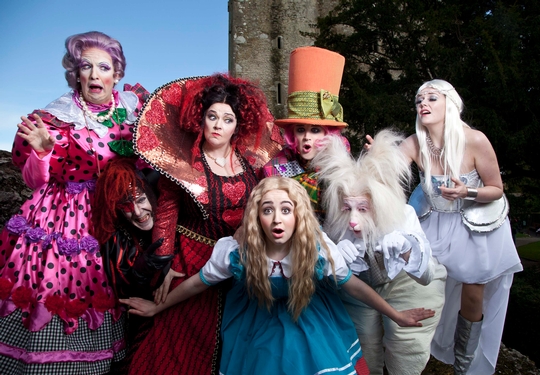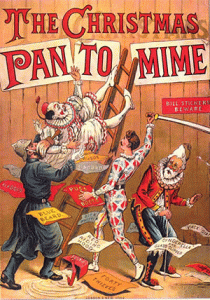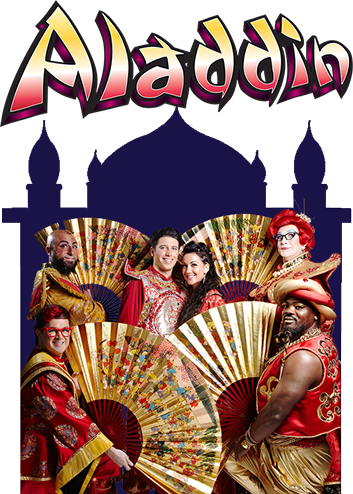
Christmas in Ireland: The Christmas Panto.
I admit it: I look forward to the annual Christmas Pantomime every year. I had heard about them in old Christmas books, but of course had never been to one. We just don’t have these in the States. When I first came over to Ireland for Christmas , I was thrilled to hear that there were not one, but two different pantomimes held in Cork during December and January. Brilliant! At last! I was psyched to go, but then was told “No way! The Pantos are for children. An adult can’t go… everyone would think you were a nutter!” I was crushed.

Determined to see this Christmas tradition, it didn’t take me long to figure out I could invite my young niece and nephew. I could get to see my panto by using little Jack and Orla as camouflage! Twenty years later I still go to the panto every year. We pretend we’re taking the young ones, our Christmas present to our nieces and nephew (now four of them), but we all know they’re really chaperoning me.
The annual Christmas Pantomime is a hugely popular, eagerly attended part of the Christmas season throughout Ireland and the UK. The Panto is a deliberately campy, over-the-top stageshow that incorporates ham acting, singing and dancing, corny humor, men in drag, audience participation, topical references, and double entendres… all aimed for children… but not-so-secretely loved by adults. Picture a children’s theatre, crossed with a vaudeville music hall, the Rocky Horror Picture Show, MTV, and a touch of Jim Henson. A slice of old fashioned entertainment!

What are pantos? How did they begin? The Pantomime (which today luckily has Nothing to do with Mime) is descended from the Harlequin and Columbina plays of the Commedia dell’arte dating back as far as the 16th Century. Simple sketch plays featuring stock characters depicting typical types of people, with bawdy humor, improvisation, and props: kind of a Punch & Judy Show with live actors.
London theatres in the 18th Century carried on this tradition, first as silent performances with only dancing and gestures (thus “pantomime”). Following nicely in the footsteps laid by the Medieval Mummer’s Plays associated especially with Twelfth Night, the Pantomimes quickly became a popular entertainment during the Christmas season. By the mid 19th Century the shows became more elaborate, with witty and topical dialogue, slapstick, and often spectacular and elaborate theatrical effects. The plots evolved from simple skits to a small repertoire based on nursery rhymes and folk tales. We’re talking twisted fairy tales here, with little resemblance and very little regard for the original tales.

There is usually little or no reference to Christmas; the basic subject is adopted from a children’s story such as from Cinderella, Aladdin, Jack & the Bean Stalk, Snow White or other such chestnut, and freely borrows characters and features from other tales, or invents wholly new bits you’ve never heard of nor dreamt. It is assumed that the audience is so familiar with the original story that there is little effort to develop the plot which is instead adapted for comic or satirical effect.*

The curtain rises. Enter the hero: “Hello boys and girls! I said HELLO BOYS AND GIRLS!!!” and repeated yet again until the audience responds loud enough.
The mad performance follows a stereotyped routine with a love triangle that includes the hero and heroine, a comic lead played by a man in drag (the Panto Dame), an evil menace, a friendly godmother sort, and a lowly servant or other character who befriends the audience, is menaced by the villain and is besotted with the heroine. Every production includes a scary scene of dark menace, and a slapstick grand chase. And then there’s the famous banter with the audience. The Dame “recognizes” people in the audience:
“Is that Mary? Mary dear, you’re looking wonderful! In this light ye can’t tell you had Botox at all!”
And the audience does indeed participate, with the enthusiasm you would expect of children at Christmas. Not just booing and hissing the villain, or sympathizing “Ahhhhh” with the lowly friend. The cast will prompt the audience, but It’s just a formality… everyone knows the score. The packed theatre will warn the hero (“Look behind you!”), and argue with the villain (“Oh no they don’t!” “Oh yes they do!” Oh no they don’t!”) You get the idea.

I suspect most of the audience is there for the song and dance (including the dreaded audience participation bit at the end). The best of the panto for me is the topical humor. Beyond the winks and nods at pop culture, hit songs and celebrities, there are plenty of razor barbs aimed at politics and current events, and naughty double entendres galore. Clever and witty, these bits are played for the adults in the house, but still enjoyed by the children on their own level.
After all these years I’d hate to think of celebrating Christmas without this tradition. The first niece we took, Orla, is now an adult close to setting off for college; nephew Jack… well he’s as tall as the beanstalk, and little Amy and Rachel are growing as fast as they can. They all grow up too fast, and soon I fear will probably be too old for this tradition. On the other hand, so far even Orla still loves going to the Panto with us, and we’ve just gained a new nephew less than a year old… I think my Christmas celebrations are safe for years to come!
_________________________________________________________________________
Visit www.nantucketchronicle.com/ , your free online resource for everything Nantucket. By Nantucketers, for Nantucketers.
________________________________________________________________________
Please excuse any annoying advertisements that may appear below this. The intrusion is on the part of the hosting site, and is in no way endorsed by the Antiques Depot.
_________________________________________________________________________

